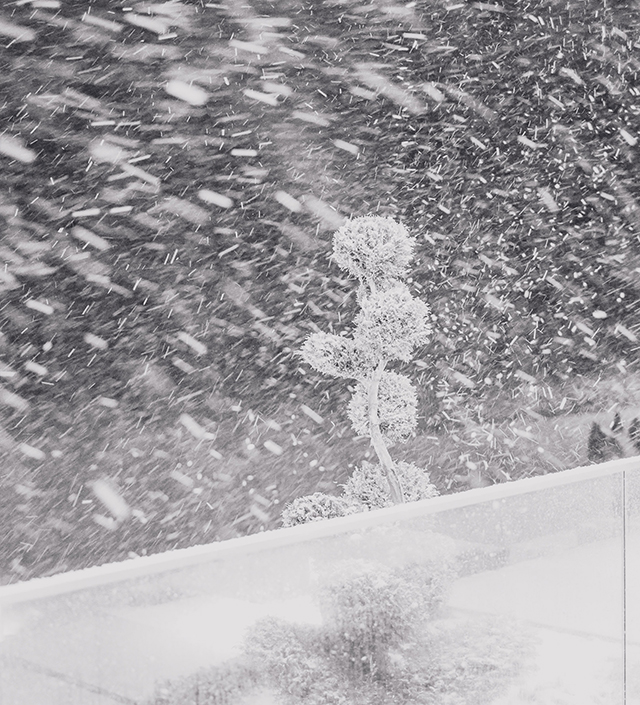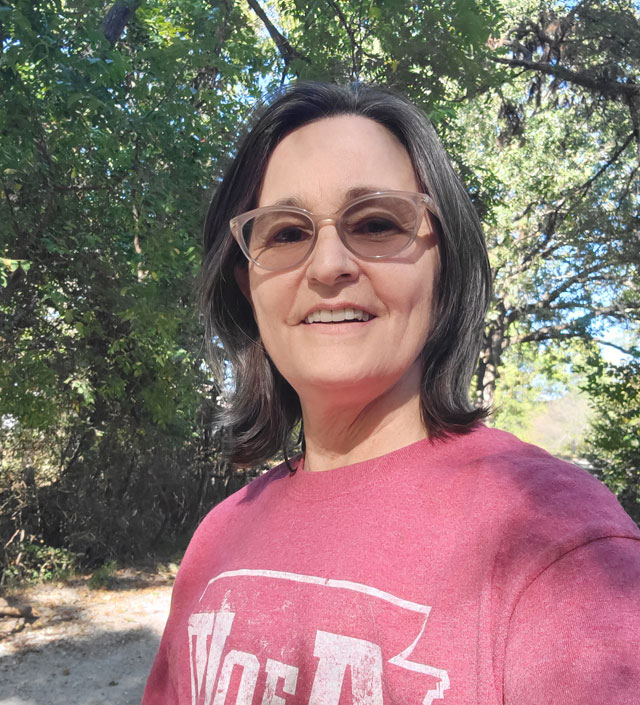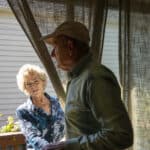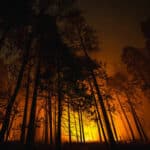Do you get the sense that disasters like blizzards, hurricanes, wildfires, tornadoes, earthquakes and other catastrophes are increasingly common? Well, you’re right. The number of billion dollar-plus events has been on the rise, largely due to global
climate change. And while disasters are traumatic events at any age, older adults are especially at risk — especially ones living isolated at home.
“What we found is that the older population isn’t as prepared as others. They are particularly vulnerable,” says Natasha Bryant, managing director/senior research associate at the LeadingAge LTSS Center @UMass Boston, and an expert in climate-related disaster preparedness.
If you have one or two clients in their 70s, 80s or 90s, you’ll do them (and yourself) a huge favor by helping them become more prepared in case of a disaster. Whether natural or manmade, catastrophes disrupt everyday life. Electric power may go down, cell towers may not work, water could be contaminated, and homes might be evacuated. As a result, routine chores, such as having medications delivered or trips to the grocery store, are suddenly impossible. And finding a place to live can be an urgent, difficult decision.
Problems Older People Face in Natural Disasters
The biggest concerns revolve around older people without internet connections and smartphones or living in rural areas and lower-income neighborhoods or those coping with cognitive decline and physical infirmities.
“Some people are not really connected to any kind of network,” says Victoria Funes, associate state director, AARP Florida.
Even older adults who are well-prepared can find disasters difficult.
Barbara Day, 78, and her 81-year-old husband live in Lynn Haven, Fla. and three years ago, the region was hit by a hurricane. They stayed in their home, battled to keep the water out and lost electricity for about three weeks. (They had a backup generator, fortunately.) Their house is still being repaired.
“It was heartbreaking,” Day says. “So devastating to the mind.”
Day is the local AARP chapter president in north Florida and recommends disaster prevention through attending educational meetings with local emergency management teams.
She has plenty of advice of her own, too. Day counsels older people to realize it will take time for insurance claims to be processed. And she warns against doing business with fraudulent contractors who often swarm through damaged neighborhoods right after a hurricane.
Another of Day’s tips: sign up with the special needs registry with your local county emergency management agency if you need assistance during disasters with evacuations and sheltering due to their physical or mental abilities.
The necessity of connecting older adults with community disaster preparedness plans is rising in importance with the aging of the U.S. population. (The ranks of people 85+ are projected to nearly triple to 19 million by 2060.) Equally significant
is the trend toward aging-in-place, jargon for staying in your home in your 70s, 80s and 90s.
Invisible Until Disaster Strikes
Yet many older adults can find themselves socially isolated in communities designed around cars, while their family and relatives are scattered. These residents are often invisible locally until a major disaster harshly reveals their existence.
“People muddle through every day. Then we get a climate event, a natural disaster. It flags the way we care for older adults,” says Debra Saliba, professor in geriatrics and gerontology at UCLA and senior natural scientist at RAND Health.
The emergency response system is better for those living in congregate living situations, such as nursing homes, assisted living and continuing care communities. Such facilities typically have emergency plans in place. That said, the reality is planning for natural disaster catastrophes isn’t always a top priority for them, especially during the pandemic.
“Disaster planning falls off the radar in the competition for attention and resources,” says Saliba. “They’re trying to get through the day-to-day challenges in the congregate settings.”
A Biden Initiative That Could Help
A potential initiative by the Biden administration could provide additional resources for disaster preparedness across the country.
It’s considering adding as much as $10 billion to the Federal Emergency Management Agency’s (FEMA) budget to better protect people, homes and communities from the severe weather consequences of climate change. FEMA’s Building Resilient Infrastructure and Communities program, which came into existence in 2018, is designed to help communities establish a range of pre-disaster
mitigation strategies. But the Trump administration only put small sums into the program.
Even if FEMA gets additional funding for it, the money would mark a small down payment on the much larger challenge of improving disaster planning and preparedness for older people.
“This is really a public health challenge,” says Robyn Stone, senior vice-president research at LeadingAge, the association of nonprofit providers of aging services and co-director of LeadingAge LTSS Center @UMass Boston. “And we know our public health system is really not supported for older adults.”
Disaster-Planning Advice for Family Members and Friends
While policymakers (hopefully) stumble toward ways of better integrating older people into disaster planning, there are a number of critical steps families and friends can take.
Top of the list: talking about the risks with older loved ones and planning in case disaster strikes. The conversation may take several tries and follow-ups.
“Many times, our parents think they are perfectly capable of dealing with the situation they have dealt with many times before,” says Funes. Her advice: “Don’t wait. Be persistent.”
For example, ask if they have a basic emergency supply kit ready to go in case they have to be evacuated. The kit should include things like medicines, eyeglasses, charging cords for mobile phones, some cash, key papers like insurance policies, as
well important contact numbers.
“People often have to leave the home in a hurry,” says David Ghilarducci, EMS medical director and deputy public health officer for Santa Cruz County in California. “Often they don’t have a kit ready. Having the kit prepared beforehand is super
important.” (You can find information about what to put into a kit at FEMA’s Ready website.)
Other key questions to ask: What is their transportation plan if they must leave in a hurry? If they’re reliant on medical equipment at home, do they have a back-up generator? Where is the nearest shelter?
Maybe the most important one: How will family members connect with you during a disaster? “A plan to connect with family is important,” says Ghilarducci. “Family will try to get hold of you.”
Answers to questions like these aren’t only smart for people living on their own. Those living in congregate living situations and their families should also know about the institution’s emergency preparedness plans. Grill staff for detailed information.
There’s a wealth of information available for guidance. Aside from FEMA’s Ready.gov site, AARP has its Create the Good site with general and state-specific information, including its Operation Emergency Prepare Toolkit for planning.
Emergency responders and public health officials need to play an important role, too. “The key is making sure older adults are well integrated into the community,” says Saliba. “A lot can flow from there.”
©Next Avenue. Chris Farrell is an award-winning journalist, he is author of the books “Purpose and a Paycheck: Finding Meaning, Money and Happiness in the Second Half of Life” and “Unretirement: How Baby Boomers Are Changing the Way We Think About Work, Community, and The Good Life.” This article was first published by Nextavenue.org.







